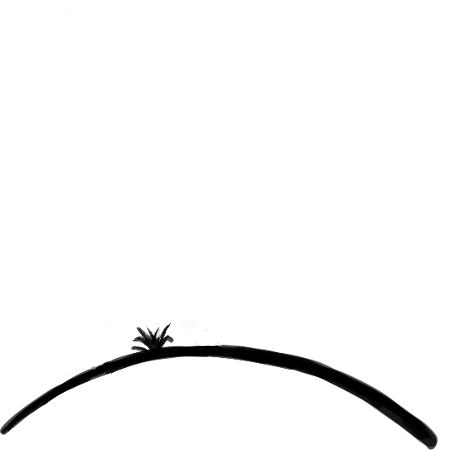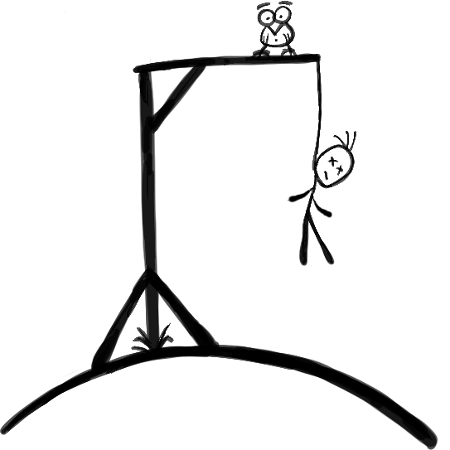FIND THE ARTIST
Can you identify human creativity?

Which painting was created by Barbara Kastelec?
Select a painting or choose "None" if all are AI-generated
Paris Residency • June 2025
These paintings emerged during Barbara Kastelec's three-week residency at the Cité Internationale des Arts in Paris.
From Fungi to Fundamental Questions
What began as "Fungivores in Paris" — a project exploring the city's hidden fungal heritage — evolved into something more profound: an investigation into what remains uniquely human in artistic creation.
The mushrooms that appear throughout these paintings became metaphors: for what grows unseen, what persists in darkness, what emerges despite adversity. Like creativity itself, fungi thrive precisely where we least expect to find them.
The Studio Practice
Each morning in her Marais studio, Barbara faced the same question: What can a human hand create that an algorithm cannot? The answer emerged not in grand gestures but in small imperfections — the slight tremor of a brushstroke, the unpredictable bloom of watercolor, the patient accumulation of observed details.
These paintings carry the DNA of their creation: June light filtering through tall windows, the sounds of Paris awakening, the physical fatigue of standing before canvas for hours, the emotional weight of creating in an age of artificial intelligence.
The Evolution
As the residency progressed, the project transformed. Initial botanical studies gave way to deeper questions about consciousness, intentionality, and the irreplaceable value of lived experience in art. The paintings became a form of resistance — not against technology, but for the preservation of what makes us human.
This exhibition exists because the Cité Internationale des Arts provided not just space and time, but an environment where questions could evolve into revelations. Their support made possible this exploration of creativity's future.
Barbara Kastelec
Slovenian visual artist • Born 1976, Kranj • Based in Ljubljana
For 25 years, Barbara Kastelec has painted the invisible forces that shape our world — from childhood desires to atomic fears, from microscopic life to the hidden networks of fungi.
Artistic Journey
Memory Fetishes (1990s)
Early works explored forbidden childhood pleasures — the bright artificial colors of candy, the guilty sweetness of stolen treats. These paintings made visible the desires we're taught to hide.
Atomic Mushrooms (2000s)
Nuclear destruction and natural regeneration intertwined in haunting compositions. Mushroom clouds became actual mushrooms, questioning whether destruction and creation are truly opposites.
Seeds (2012-2017)
Life's origins magnified to cosmic scale. Microscopic seeds became planets, cellular structures became galaxies, revealing the universe contained in every beginning.
Invisible Companions (2020-2021)
The pandemic years brought focus to the microbial world we live alongside. Bacteria, viruses, and fungi emerged from invisibility as companions rather than enemies.
Fungivores in Paris (2025)
The latest evolution: fungi as metaphor for resilience, for what thrives in darkness, for the networks that connect all life — and perhaps, for human creativity itself.
Artist Statement
"I paint what we cannot see but know exists. In an age where machines can mimic any style, any technique, any subject, I return to the only thing they cannot replicate: the experience of being human. Each painting carries the accumulated weight of a life lived — the childhood memories, the fears faced, the wonders witnessed. This is what I offer: not perfection, but presence. Not optimization, but observation. Not efficiency, but existence. When you look at my work, you see not just pigment on canvas, but time made visible, consciousness given form, mortality embracing eternity through the simple act of creation."
Connect
Cité Internationale des Arts
This exhibition was made possible by the generous support of the Cité Internationale des Arts in Paris.
A Space for Creation
For over 50 years, the Cité Internationale des Arts has provided a unique environment where artists from around the world can develop their practice in the heart of Paris. With locations in both the Marais and Montmartre, the Cité offers more than just studios — it provides a community of international creators engaged in dialogue across cultures and disciplines.
The Residency Experience
Barbara Kastelec's three-week residency in June 2025 provided the essential conditions for this project's evolution: uninterrupted time for creation, a studio flooded with Parisian light, and the intellectual stimulation of being surrounded by artists confronting similar questions about creativity's future.
The Cité's support allowed what began as a botanical investigation to transform into this deeper exploration of human creativity in the age of artificial intelligence. The residency's atmosphere of experimentation and exchange proved crucial to this conceptual evolution.
Continuing Legacy
The Cité Internationale des Arts continues to nurture artistic innovation, providing over 300 artists annually with the space and support to push boundaries and ask difficult questions. In an era of rapid technological change, institutions like the Cité become even more vital — preserving spaces for human creativity to flourish on its own terms.
Our Gratitude
We extend our deepest thanks to the Cité Internationale des Arts for believing in this project and providing the conditions for its realization. Their commitment to supporting artists as they navigate contemporary challenges makes possible exhibitions like this one — where questions about art's future can be not just asked, but experienced.
The Theory Behind the Game
Welcome to the weird reality where humans can barely tell the difference between human and AI art. Turns out we're only about 50-60% accurate — basically a coin flip. This game explores what that means for creativity, consciousness, and the future of art.
The 50% Problem
Here's the thing that keeps artists up at night: recent studies show that even experts struggle to identify AI-generated art. We're barely better than random guessing. This isn't just embarrassing — it's existential.
If we can't tell the difference, does the difference even matter? Or are we facing the end of something fundamentally human?
Fun fact: Art history students — the ones most confident in their expertise — actually show the highest rates of getting it wrong. Confidence, meet reality.
Your Brain on AI Art
Ever feel slightly uncomfortable looking at AI art but can't explain why? That's your parietal cortex lighting up — the part of your brain that detects when something's "off." It's the uncanny valley effect, but for paintings instead of robots.
The weird part? Even when we can't consciously identify AI art, our brains often know something's wrong. We just can't articulate what. It's like having a word on the tip of your tongue, except it's the entire concept of human creativity.
What Makes Art Human?
This is where it gets philosophical (but stay with me). Walter Benjamin talked about the "aura" of art — that special something that makes an original painting different from a reproduction. AI throws a wrench in this whole idea.
AI can create unique images that are paradoxically not unique at all. Each one is singular, yet infinitely reproducible with zero effort. It's authenticity without authentic experience. Mind-bending, right?
The consciousness question: Does real creativity require a conscious mind? Or is it just patterns all the way down? (Spoiler: Nobody really knows.)
The Stakes Are Real
This isn't just academic navel-gazing. Professional artists are losing 70% of their income to AI. Illustrators watch $500 commissions vanish to images generated in seconds. The creative industry is experiencing its own industrial revolution, except the machines are coming for the painters, not the factory workers.
Every wrong guess in this game represents another aspect of human creativity we might lose. It's dramatic, sure, but also kind of true.
Why Hangman?
The game mechanics aren't random. Each wrong guess literally eliminates possibilities — just like each AI advancement eliminates another uniquely human creative space. The hangman drawing? That's us, slowly constructing our own creative obsolescence.
But here's the twist: by playing, by trying to spot the difference, you're part of the resistance. You're keeping alive the ability to recognize human creativity, even if you're only 50% successful.
The Bigger Picture
Philosopher Luciano Floridi calls AI the "fourth revolution" — after Copernicus (Earth isn't the center), Darwin (humans aren't special creations), and Freud (we're not even in control of our minds). Now AI suggests we're not uniquely creative either.
Heavy stuff? Absolutely. But that's why we made it a game. Sometimes the best way to confront existential threats is to turn them into something playable.
So What Now?
The point isn't to make you paranoid about AI or nostalgic for a pre-digital world. It's to make you think about what we value in human creativity and why it matters.
Barbara's paintings carry something AI can't replicate: the accumulated weight of a lived life, the tremor of a mortal hand, the intentional choices of a conscious mind. Or do they? That's for you to decide.
Remember: in a world where we can barely tell the difference, the act of trying to tell the difference might be what keeps us human.
